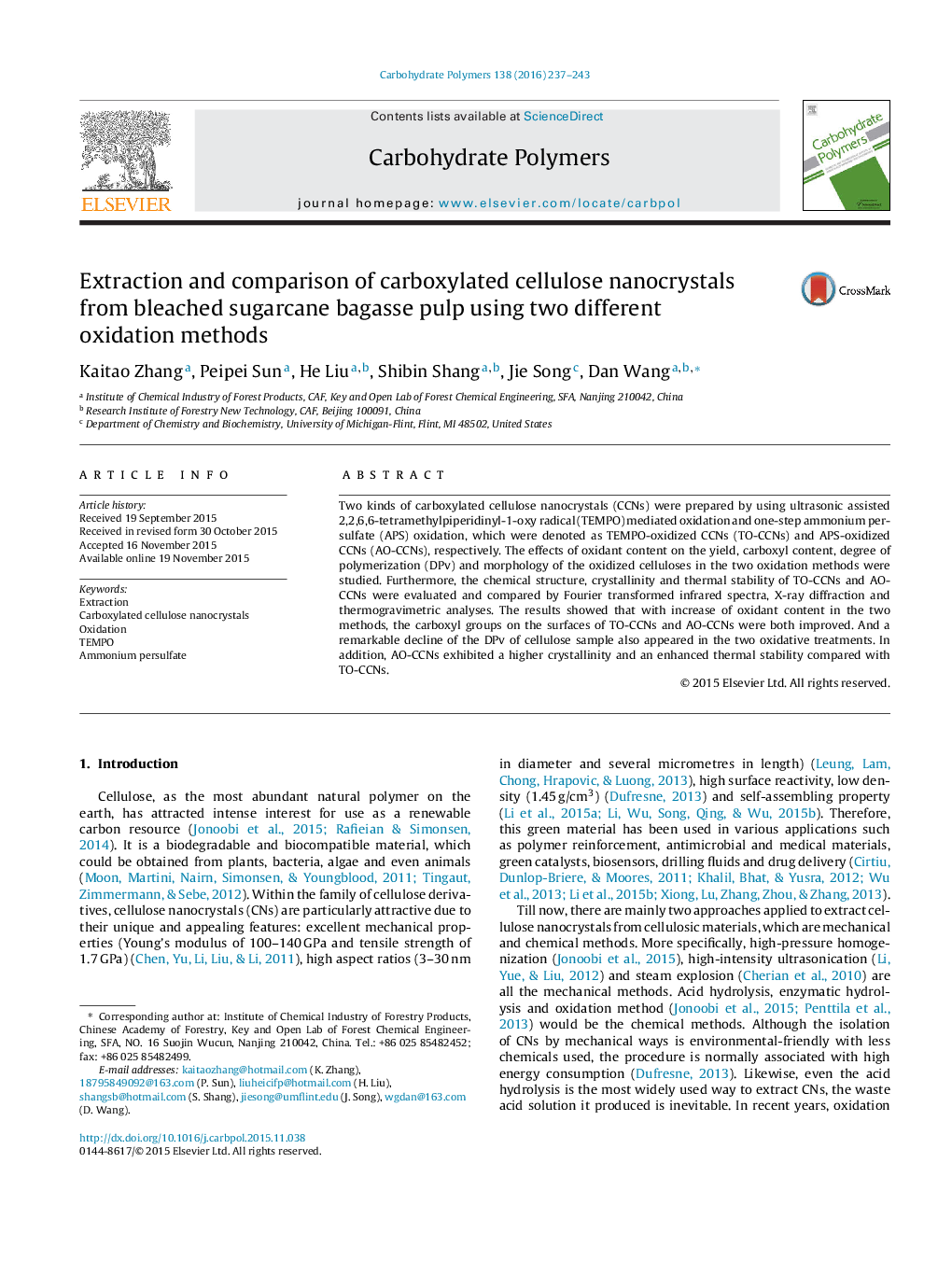| Article ID | Journal | Published Year | Pages | File Type |
|---|---|---|---|---|
| 1385098 | Carbohydrate Polymers | 2016 | 7 Pages |
Abstract
Two kinds of carboxylated cellulose nanocrystals (CCNs) were prepared by using ultrasonic assisted 2,2,6,6-tetramethylpiperidinyl-1-oxy radical (TEMPO) mediated oxidation and one-step ammonium persulfate (APS) oxidation, which were denoted as TEMPO-oxidized CCNs (TO-CCNs) and APS-oxidized CCNs (AO-CCNs), respectively. The effects of oxidant content on the yield, carboxyl content, degree of polymerization (DPv) and morphology of the oxidized celluloses in the two oxidation methods were studied. Furthermore, the chemical structure, crystallinity and thermal stability of TO-CCNs and AO-CCNs were evaluated and compared by Fourier transformed infrared spectra, X-ray diffraction and thermogravimetric analyses. The results showed that with increase of oxidant content in the two methods, the carboxyl groups on the surfaces of TO-CCNs and AO-CCNs were both improved. And a remarkable decline of the DPv of cellulose sample also appeared in the two oxidative treatments. In addition, AO-CCNs exhibited a higher crystallinity and an enhanced thermal stability compared with TO-CCNs.
Related Topics
Physical Sciences and Engineering
Chemistry
Organic Chemistry
Authors
Kaitao Zhang, Peipei Sun, He Liu, Shibin Shang, Jie Song, Dan Wang,
